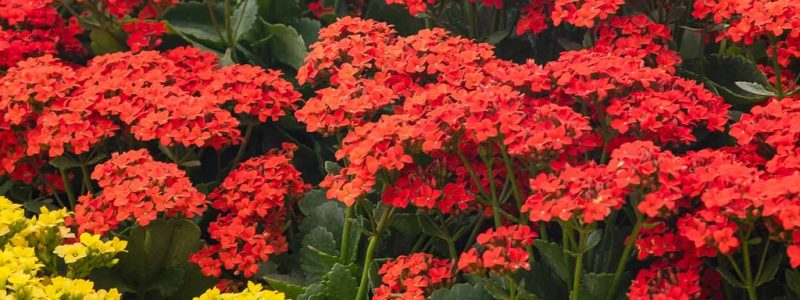We’ve all seen the colorful, joyful flower clusters of Kalanchoe blossfeldana, or blossoming Kalanchoe, which everyone pronounces differently (and no one knows who’s right 🙂 ). Flowering Kalanchoe, a relative of the Jade plant, is a low-maintenance succulent house plant.
Many people regard kalanchoes as annuals, discarding them once they’ve bloomed. It takes some discipline to get them to bloom again, but once you get the hang of it, you’ll be able to make your kalanchoes bloom on demand!

Here are some suggestions for re-blooming your kalanchoe:
Flowering Depends on Light: Kalanchoes are photoperiodic, which means they bloom in response to the length of day. They blossom in the early springtime. Six weeks of simulated winter illumination conditions are required to urge your plant to set bloom buds.
Simulate Night: Place your plant in total darkness for 14 hours a day and brilliant light for 10 hours a day for six weeks. To obtain complete darkness, you may carry it in and out of a closet or use a cover. When you observe blossom buds opening after six weeks or so, you may move your plant back into regular light conditions and continue watering. Check out our articles on how to cultivate poinsettias and Christmas cactus for additional information on photoperiodic flowering.
Reduce Watering: Water half as often, or even less, during the six weeks.
Kalanchoe Growing Tips
Kalanchoes are low-maintenance plants that thrive in low-humidity environments like winter homes. Choose Kalanchoe plants with a lot of unopened flower buds instead of ones that have fully bloomed, and be sure to offer them:
Temperature: Kalanchoes perform well at average home temperatures, although drafts should be avoided. Keep your kalanchoe above 50 degrees Fahrenheit.


